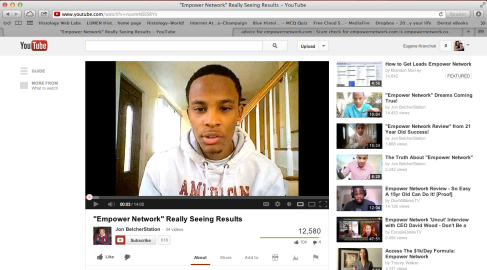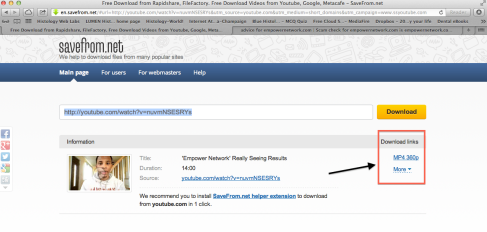(Making Money Online: What Works and What Doesn’t)
Hey Guys,
Over the last few months, I have tried about every stupid thing on the internet to make money. I have found only a select few that really pay. I am writing this to give everyone a simple guide to making money online without all the BS. Oh, and make sure to check out the links within the text. They offer you detailed information on specific websites.
What Not To Do
The don’t section of this article is more important than the do section. I have spent countless hours on the don’t section and only a select few on the do section. Most websites that promise you money don’t work. Here are a few sites that don’t work.
1. Any site that asks you to give money in order to use their site is a scam. Stay away. Run and never turn back.
2. 99.9% of the paid survey sites are bad. Making money on a site like this takes a long time and you have to give away almost all of your private information. Even when you find a site that let’s you actually take a survey, most of the time you don’t qualify. This means they will put you in some stupid monthly drawing and chances are you will never receive any money. I started to get spammed a lot after signing up for these sites. And don’t even think about asking them to not send you emails anymore. Once they have your information they will not stop contacting you. I guess you could make a few dollars every few months if you are lucky enough to qualify, but you have to give away your soul to do it. Plus, the money you make is minimal. There are much better sites to make money. These sites are just not worth it.
3. Any site that you have to sign up for offers is dangerous. These sites redirect you to other unreliable sites and you have to give away more personal information. I am just not comfortable doing that. It really isn’t worth the few dollars you get for signing up for an offer.
4. Sites that offer you money for posting in forums are not good money makers. I am thinking of a site like MyLot. Content Producer Jennifer does a great job breaking down this website. Just click on the MyLot link for a quality non-bias look.
The good news is that there are a few sites that do actually pay you for some hard work. Notice I said hard work. Most people want to make money online and have it just fall on their lap. In order to make some legitimate money, a lot has to be done. Here are a few sites that can work if you put the effort into them.
1. Associated content is a great site and the best one I have found. AC gives writers everything they need to be successful. They give you sites to promote on, your own profile and web space, a great community, and money up front. With the Associated Content Performance Bonus a writer can make as much money as they want. The downsides are few and far between. If you are a talented writer and a good self promoter than you can make a few hundred a month on this site.
2. Helium and Constant Content are the second-tier pay for writing sites. In order to make money on Helium, you have to write a ton of articles and by a ton I mean a ton. Generating a good stream of cash is possible if you write a bunch and you get lucky. The great thing about this site is you don’t have to spend as much time on each thing you write. Typically, a 100 word response is good for the category. A person really has to think long term when they write for Helium. Constant Content offers big money for big articles. Serious writers need only apply. The problem is it takes forever to get an offer on an article and even then you don’t make a lot of money. This site can be a lot of fun if you are a serious writer and you like to write extensively.
3. Moola is a fun gaming website that gives you a chance to win big. The games here are simple but they are a lot of fun and people are always looking to play. There are a number of ways to make money and my research shows this site to be legit. No one is going to have a huge pile of money from this site but getting paid to play games is pretty cool. They have a neat referral system and I imagine if you want to make money from this site then referring people is the way to do it. I have invitations if anyone is looking for them.
4. If you are a talented promoter and can offer people something new, then blogging is a great way to make some money. Most blogging sites like Blogger use Google Adsense to make money and this is usually a tough way to make income. There is some hope though. If you find some good ways to promote then the possibilities are endless. If you are really feeling ambitious then invest in your own website. If you are starting your own website to make money make sure you have some unique material to offer.
5. This one is pure speculation but I have done my research and AGLOCO sounds legitimate. Back in the late 90’s, AllAdvantage was a success. It paid over 120 million dollars to its member who got money from referring people and surfing the web. AllAdvantage was known for its privacy protection and for its payout. The new incarnation is AGLOCO (AGlobal Community). The Toolbar service is not quite out yet but people are referring like mad. Some people have referred upwards of 20000+ people!. Make sure to check it out and if you want more information contact me.
THE BEST ONE THAT GUARANTEES TO MAKE MONEY?
EMPOWER NETWORK…hands down!
watch this free video to find out what I am talking about: Click HERE!
-If you have never heard or are skeptical, just simply watch the video if you are not yet convinced:
There are lots of programs with broken promises and you may not even believe me right now, but what have you got to lose, with a 30-day money back guarantee…IN FACT, the company doesn’t bill you for the first 30-days!
Make sure to protect yourself out there. A lot of sites are trying to get your personal information and have little in the way of making you money. If you find any more legit sites please contact me. Hope this guide was helpful!
See you at the top 🙂
“Dream to Succeed…then take ACTION”
916.275.4820
gene2success@gmail.com













